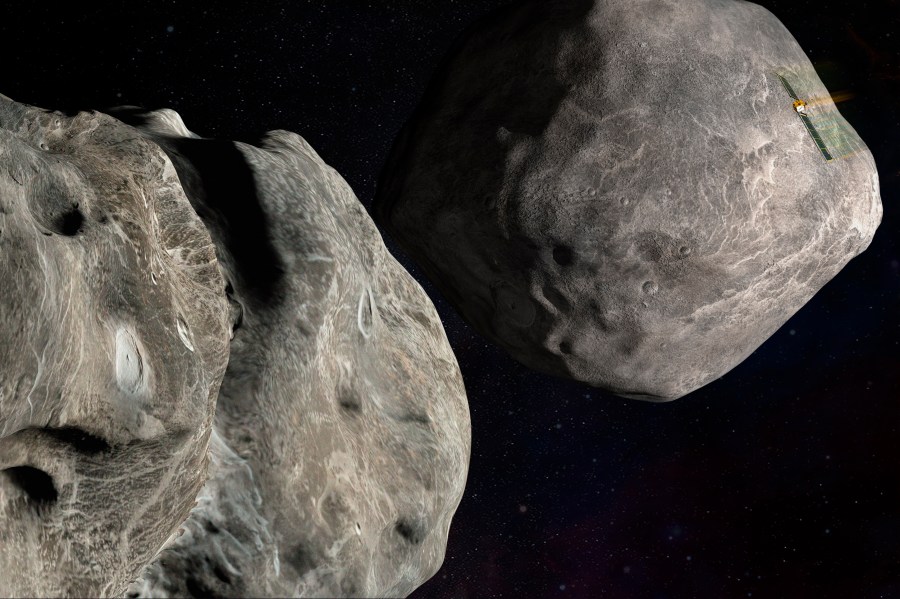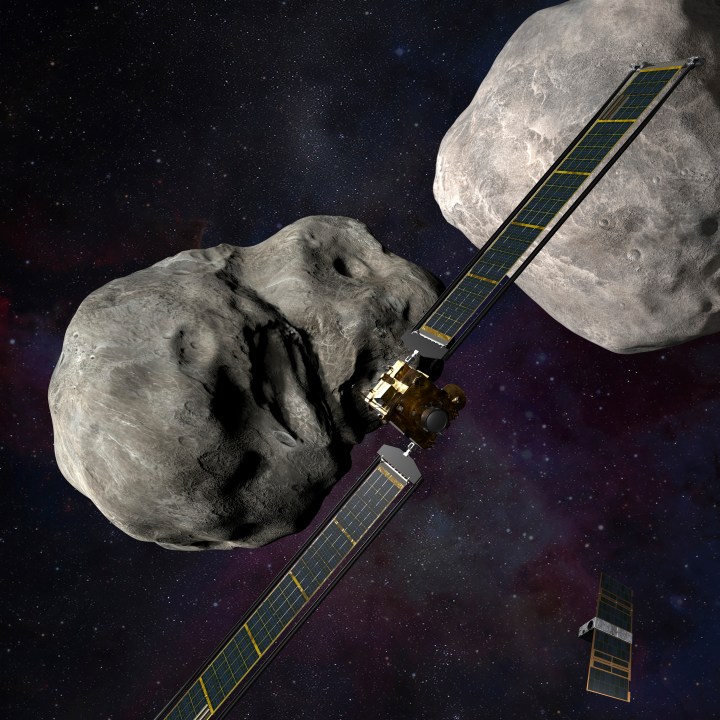NASA successfully crashes into asteroid
(NewsNation) — NASA successfully completed its Double Asteroid Redirection Test (DART) on Monday, launching a spacecraft into an asteroid.
The goal: To change the path of the asteroid, diverting it away from Earth.
Don’t fret. There was no real threat here on Earth.
The collision happened 7 million miles away from our planet, and the technology could someday be used to save humanity in an “Armageddon” situation, according to NASA.
The mission has been in the making for years. A man-made spacecraft, the size of a vending machine, launched last year by NASA, finally hit an asteroid, known as Dimorphos, Monday evening.
The collision occurred around 7:14 p.m. ET with an impact of 14,000 mph. The mission went according to plan, meaning DART hit Dimorphos hard enough to change its orbit away from Earth.
“We have impact!” Mission Control’s Elena Adams announced, jumping up and down and thrusting her arms skyward.
Telescopes around the world and in space aimed at the same point in the sky to capture the spectacle. Though the impact was immediately obvious — Dart’s radio signal abruptly ceased — it will be days or even weeks to determine how much the asteroid’s path was changed.
The $325 million mission was the first attempt to shift the position of an asteroid or any other natural object in space.
“We’re embarking on a new era of humankind,” said NASA’s Lori Glaze, planetary science division director.
Former NASA astronaut Jose Hernandez explained to NewsNation that the spacecraft wouldn’t destroy the asteroid altogether, but rather adjust its angular momentum.
Hernandez broke it all down. There are two asteroids that are in orbit: a big asteroid and a smaller asteroid that is right next to the big one. NASA is planning to target the smaller asteroid to see if by changing the momentum of the smaller asteroid, it will cause a trajectory change to the bigger asteroid. The smaller asteroid will then move at a closer and faster orbit around the bigger asteroid.
“We’re taking advantage of orbital mechanics and the big one is so massive, you’re gonna need a lot bigger mass to affect this trajectory where the little one you affect this trajectory, but then because it’s orbiting around the big one, it’s going to affect the big one and give change. So it’s almost a multiplicity effect that we get,” Hernandez explained why NASA is targeting the smaller asteroid rather than the larger asteroid.
NASA has been working on the $312 million project for more than a year with the help of Johns Hopkins physics laboratory. Those involved with the mission say if all goes well, it will be a big step forward for humanity.
Scientists say that if the mission is successful, it will be a massive step forward in “planetary defense.”
Hernandez explained that the mission is extremely important to our planetary defense because there is some data and evidence that a big asteroid did impact Earth millions of years ago.
“A lot of people believe — scientists believe — that that’s what caused the extinction of the dinosaurs. So another one can potentially cause the extinction of humankind as we know it, Hernandez said.
“Because at the end of the day, the real question is, how effectively did we move the asteroid, and can this technique of kinetic impact be used in the future if we need to,” said NASA Program Scientist Tom Statler.
Viewers can watch the collision take place on NewsNation Monday at 7:14 p.m. ET.












